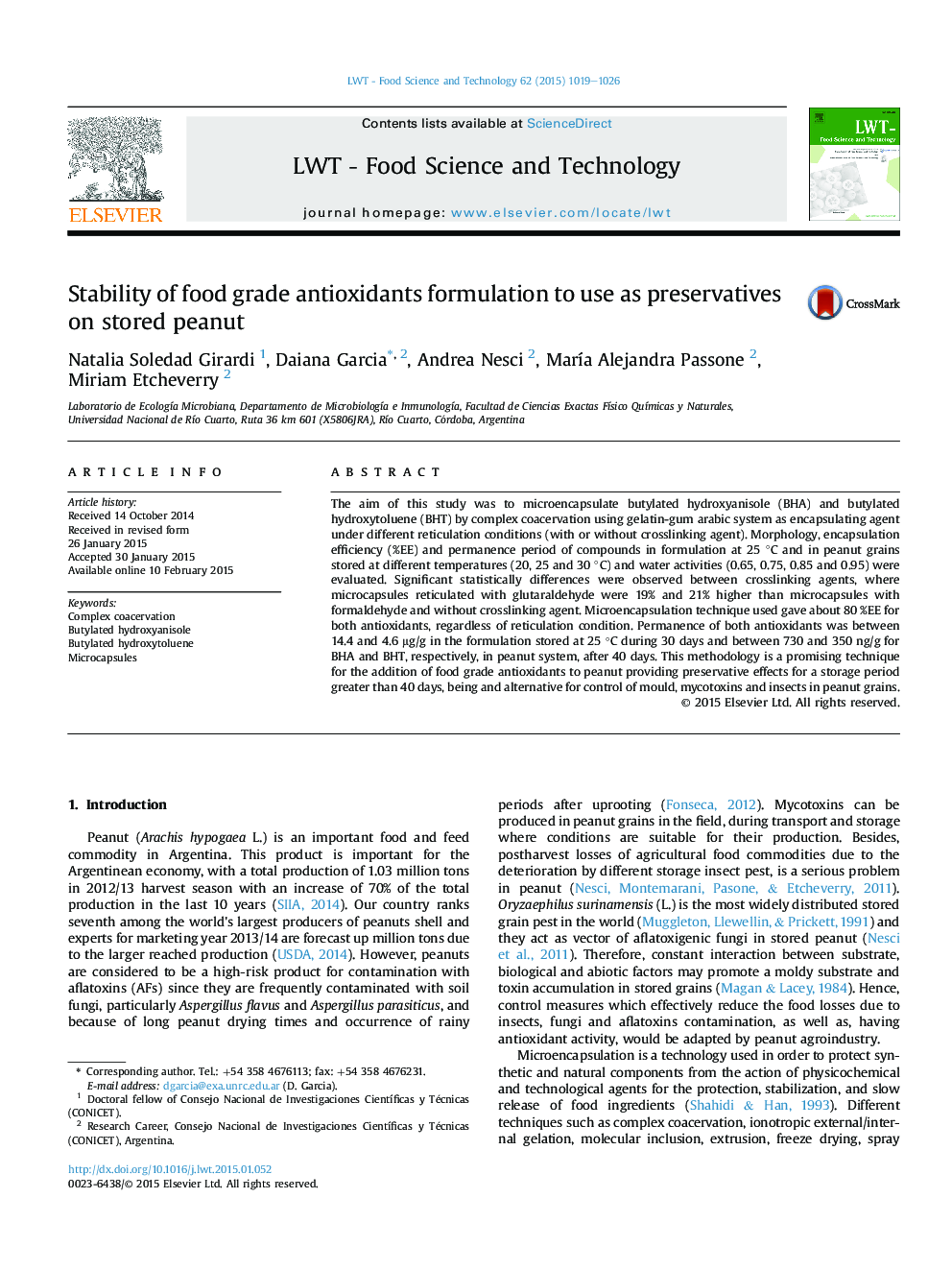| Article ID | Journal | Published Year | Pages | File Type |
|---|---|---|---|---|
| 6400603 | LWT - Food Science and Technology | 2015 | 8 Pages |
Abstract
The aim of this study was to microencapsulate butylated hydroxyanisole (BHA) and butylated hydroxytoluene (BHT) by complex coacervation using gelatin-gum arabic system as encapsulating agent under different reticulation conditions (with or without crosslinking agent). Morphology, encapsulation efficiency (%EE) and permanence period of compounds in formulation at 25 °C and in peanut grains stored at different temperatures (20, 25 and 30 °C) and water activities (0.65, 0.75, 0.85 and 0.95) were evaluated. Significant statistically differences were observed between crosslinking agents, where microcapsules reticulated with glutaraldehyde were 19% and 21% higher than microcapsules with formaldehyde and without crosslinking agent. Microencapsulation technique used gave about 80 %EE for both antioxidants, regardless of reticulation condition. Permanence of both antioxidants was between 14.4 and 4.6 μg/g in the formulation stored at 25 °C during 30 days and between 730 and 350 ng/g for BHA and BHT, respectively, in peanut system, after 40 days. This methodology is a promising technique for the addition of food grade antioxidants to peanut providing preservative effects for a storage period greater than 40 days, being and alternative for control of mould, mycotoxins and insects in peanut grains.
Related Topics
Life Sciences
Agricultural and Biological Sciences
Food Science
Authors
Natalia Soledad Girardi, Daiana Garcia, Andrea Nesci, MarÃa Alejandra Passone, Miriam Etcheverry,
